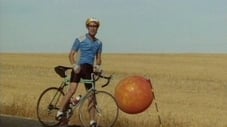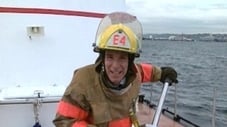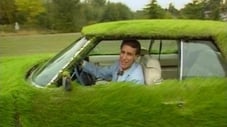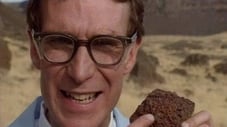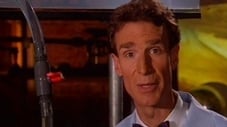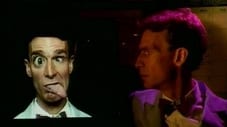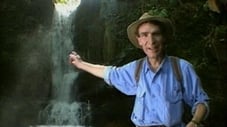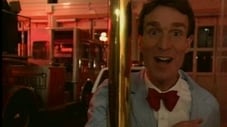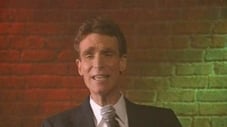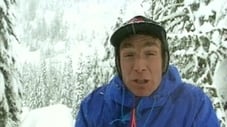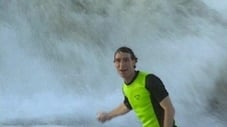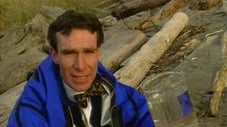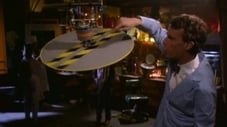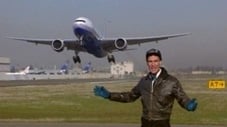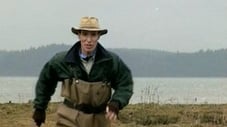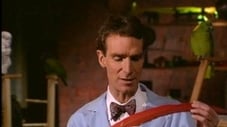
Season 3 (1995)
← Back to season list
Episodes 20
Planets & Moons
Each planet is different. They are all different sizes – Pluto’s the smallest, and Jupiter’s the biggest. They come in a variety of colors – Mars is covered with rust, so it looks red; the methane (cold natural gas) in the atmosphere of Uranus makes it look blue; and Saturn’s colorful rings are made of icy rock. As far as we know now, Earth is the only planet in our solar system that is home to living things.
Read MorePressure
When you push something, you’re using pressure. Pressure depends on two things – the power of the push and the area that’s being pushed on. A push on a small area makes more pressure than the same size push on a big area. Pushing hard on something creates more pressure than a little nudge, naturally.
Read MorePlants
A plant’s recipe for food has only three main ingredients: sunlight, carbon dioxide, and water. When plants make their food, they give off what animals need – oxygen. Without oxygen, animals like us wouldn’t be able to breathe. If plants weren’t here on Earth, we wouldn’t be here.
Read MoreRocks & Soil
We live on top of rocks – the Earth’s surface. There are three basic types of rocks — igneous, sedimentary, and metamorphic — and each type is made a different way. Igneous rocks are made from cooled lava. Sedimentary rocks are made from small pieces of other rocks stuck together. Metamorphic rocks are formed when other rocks are heated or pressed, or both. One type of rock can change into another type of rock as the Earth’s surface shifts and changes. It takes the right conditions and a lot of time.
Read MoreEnergy
Energy can change forms. Your body changes the energy in food into energy you can use to do things. Dams turn the energy in falling water into electrical energy to bring power to your house. Sound energy changes into moving energy (like when the bass is so high you can feel the floor move).
Read MoreEvolution
All living things have genes, which are like little sets of blueprints. Genes have information about the color of your eyes, the shape of your nose, and whether you hair is straight or curly. When living things make other living things, they pass copies of these blueprints to the offspring. The copies are mixtures. They’re never exact, never quite perfect. So, the cool thing is that no two sets of blueprints are exactly alike. So each living thing is different from other living things. Scientists know about evolution from fossils. Fossils show how living things used to look millions of years ago. Scientists take information from fossils to see how living things have changed over thousands, hundreds of thousands, and millions of years.
Read MoreWater Cycle
About 70% of the Earth’s surface is covered in water, and almost all of that water has been around since the Earth formed billions and billions of years ago. That means a glass of water you drink today could be water that a dinosaur once sipped. Water is constantly recycled on Earth as rain, snow, sleet and hail. It makes its way in and out of oceans, lakes, streams, hail, and glaciers. Scientists call the recycling of water the water cycle (not that bad, huh?).
Read MoreFriction
Friction is a force that slows moving things down and turns the moving energy into heat energy. When two things rub together, like your bike tires and the road, friction between them slows you down. There’s also friction in the metal parts of the wheel’s hub – at the center. There’s even friction between the fibers and rubber of the tires themselves as they flex and roll. That’s why you eventually stop rolling when you stop pedaling. Rough things make more friction than smooth things. Rubber shoes on a clean wooden basketball floor create more friction than do hard metal skate blades on smooth ice.
Read MoreGerms
Don’t panic, but germs are all around you. Germs are bacteria, viruses, protozoa, and fungi, very small one-celled organisms. Your skin keeps most of these organisms from ever getting into your body. If germs slip inside, your body has some powerful weapons to attack and destroy them. And not all germs are bad; there are good germs, too, like the ones that live in our stomach and intestines – our guts.
Read MoreClimates
There are lots of different climates all over the world. Deserts are warm and dry. Temperate forests are cold and wet. Tropical rain forests are warm and wet. Animals and plants live in climates that are good places for them to live. Cacti wouldn’t grow too well in the Arctic, just like polar bears would over heat in the desert.
Read MoreOcean Life
There’s an amazing amount of living things in the ocean. There are fish, sharks, flowers, whales, squid, sea plants, sea anemones, sea otters, and all sorts of other things living in the water. But most of the living things in the ocean are so small we can’t even see them. These tiny plants and animals are called plankton – the “drifters”.
Read MoreSpinning Things
A lot of things spin – bike wheels, footballs, hard disks in your computer, and even the Earth – they’re all twirling around. Spinning things have inertia, which means they keep spinning unless something slows them down. Bike tires keep spinning until you put on the brakes. A football spirals through the air until you catch it. The Earth keeps on spinning 24 hours a day, seven days a week. It’s been spinning for over four billion years.
Read MoreFish
More than 22,000 different species of fish live in the oceans, lakes, and rivers of the world. Fish come in all shapes and sizes. Some eat water plants, some eat other fish. Lampreys and some jawless fish suck onto other fish for food. Stone fish live on ocean bottoms and camouflage themselves as rocks. Puffer fish blow themselves up like a balloon, only they’re covered with spines. There are tons of strange and cool-looking fish everywhere.
Read MoreHuman Transportation
Transportation is all about moving people and their things. You can transport yourself around using your feet, a bike, a car, a train – anything that gets you going from one place to another. Humans have been moving around from place to place ever since they’ve been on Earth. That’s how we get our food and our materials like lumber, concrete and computers from one place to another.
Read MoreWetlands
Wetlands are not just home to different animals and plants, but they also control flooding and help keep the Earth’s water clean. Flood waters move more slowly through wetlands because they have to go through barriers of plants and dirt. Wetlands help stop erosion because the plants stop the soil from washing away. Plants and soil in wetlands slow water enough that bacteria and other decomposer organisms can break down and even absorb some types of pollution. Wetlands are wet. Let’s keep them that way.
Read MoreBirds
Scientists believe that birds evolved from reptiles. Birds have backbones, and they lay eggs, but they’ve developed a unique feature that sets them apart from all other animals – feathers. Feathers are made of the same stuff human fingernails and hair are made from – a protein called keratin. Feathers, combined with lightweight bones, powerful wings and strong hearts let birds fly.
Read MorePopulations
Populations need a couple of basic things to survive – food and a place to live. When two or more populations of living things are crowded into a small area, there is competition for food and space. A population of birds and a population of squirrels compete for seed and bread crumbs in a park. Competition is a natural part of life, but problems can arise if populations get out of balance.
Read MoreAnimal Locomotion
Some animals have wings that let them fly and hover. Other animals have legs, from two to more than 200, to get them walking, galloping, or running. Some animals’ legs are really pumped-up for powerful jumps. Animals also strut, stroll, slither, swim, slime, sprint and squeeze their way around.
Read More